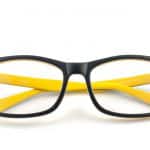Amid the post-wedding glow of Prince Harry and Meghan Markle, we ponder the importance of our eyes to determine a walk down the aisle – or otherwise.
There are a myriad of apps, television shows, websites and all sorts of ways for people to meet, hook up and date these days. But no matter how smart the technology, there is nothing like meeting someone in person and using your senses – and particularly your eyes – to determine if there is a connection or not.
The look of love has been the subject of numerous studies – with results more or less saying the same thing: your eyes play an important role in attraction, consideration and then acceptance or rejection of a potential partner.
If you are single, consider your own reaction when meeting someone new. Do you look in their eyes, avert your gaze or look obviously towards their body? All this eye manoeuvring can expose different things about how you feel towards that person becoming a prospective mate.
Our eyes are capable of responding to 1.5 million simultaneous messages so that they’ll subconsciously spot when someone starts looking at us and they will start ‘taking notes’.
Evidence reveals that men and women look at each other differently – particularly when they meet for the first time.
Author of In the name of love, Dr Aaron Ben-Ze’ev said in his Psychology Today blog that women tend to look at men’s eyes, whereas men initially look at women’s bodies.
He says that eyes are important components to our physical appearance while large eyes are perceived to be more honest.
A study conducted by Dr Daniel Gill found that, when looking at a female face, men attached the most importance to the whole female face followed by the eyes while women rated the eyes as the most important feature on a male’s face.
Another, 2014 study found that eye movements could reveal whether a person was in lust or in love. According to this research, when you meet someone, if you concentrate on their face, you are seeing a potential romantic partner but if your gaze keeps falling to the body, then the attraction is more sexual.
The study’s lead author Stephanie Cacioppo said that, “Although little is known about the science of love at first sight or how people fall in love, these patterns of response provide the first clues regarding how automatic attentional processes, such as eye gaze, may differentiate feelings of love from feelings of desire towards strangers.”
And while eyes may provide the window to the soul of love, they also provide another important mechanism, which is where we reject advances.
Dr Ben-Ze’ev says that gaze aversion is typical of the situation in which we shun intimacy. He cites that in a similar way to an animal that may respond aggressively or take flight when they are stared at, humans will avert their eyes to stave off an intrusive advance.
If however, you are engaged in a great conversation with lots of eye contact, watch the eyes for signs of some stretched truths. Eyes darting around, glancing to the left, rapid blinking and lengthy eye closes are all signs that the information being imparted may not be 100 per cent correct.
Regardless of what the signs around you are, if you’re struggling to see them at all, it might be time to see your optometrist!





